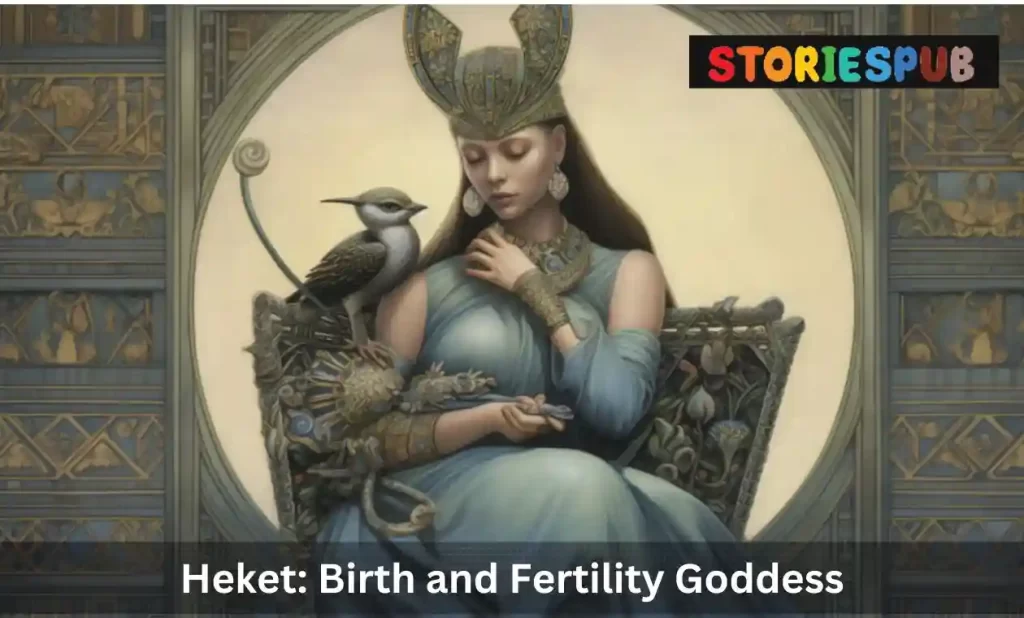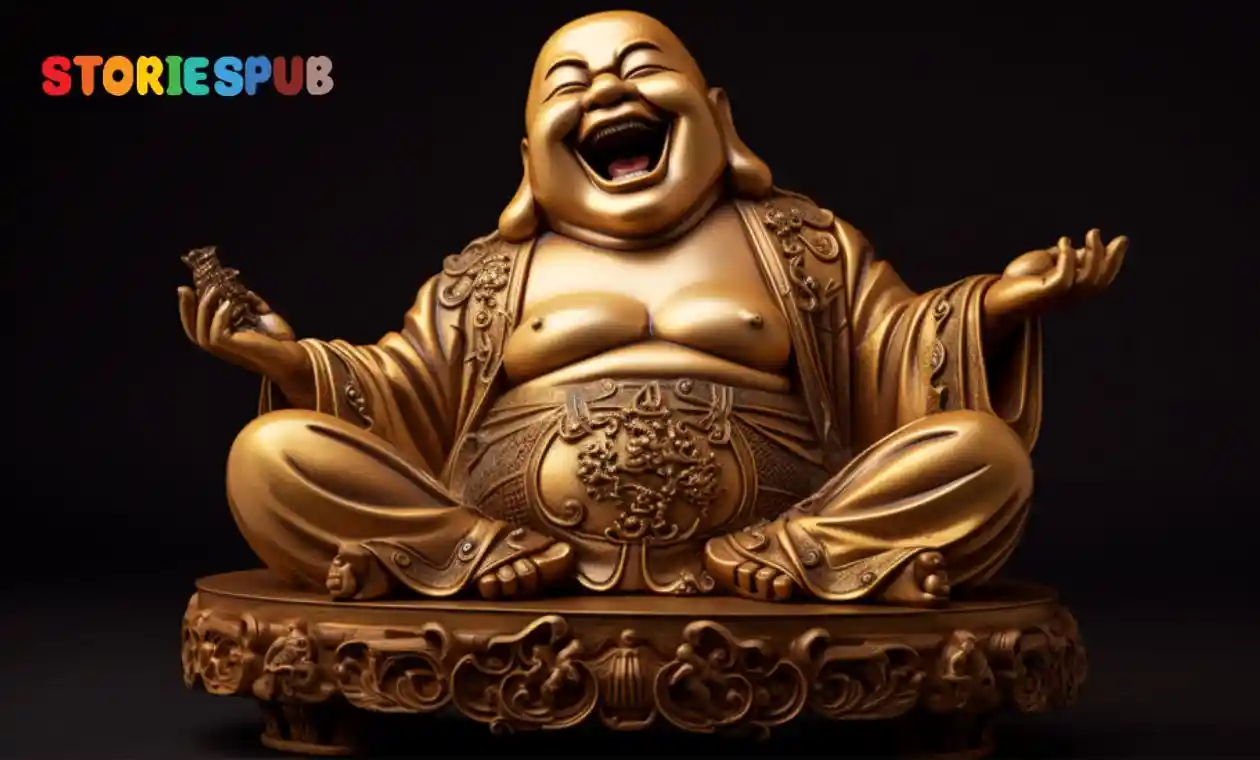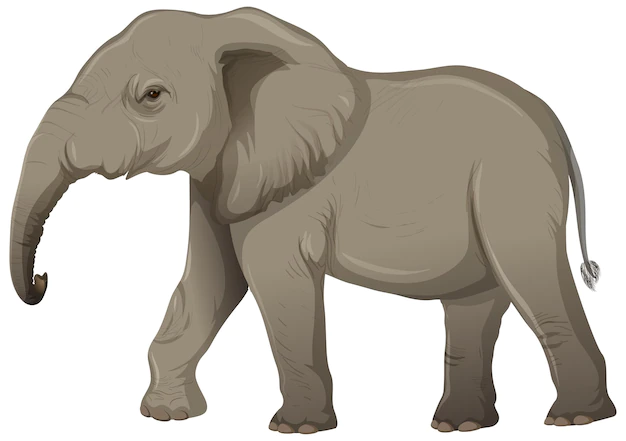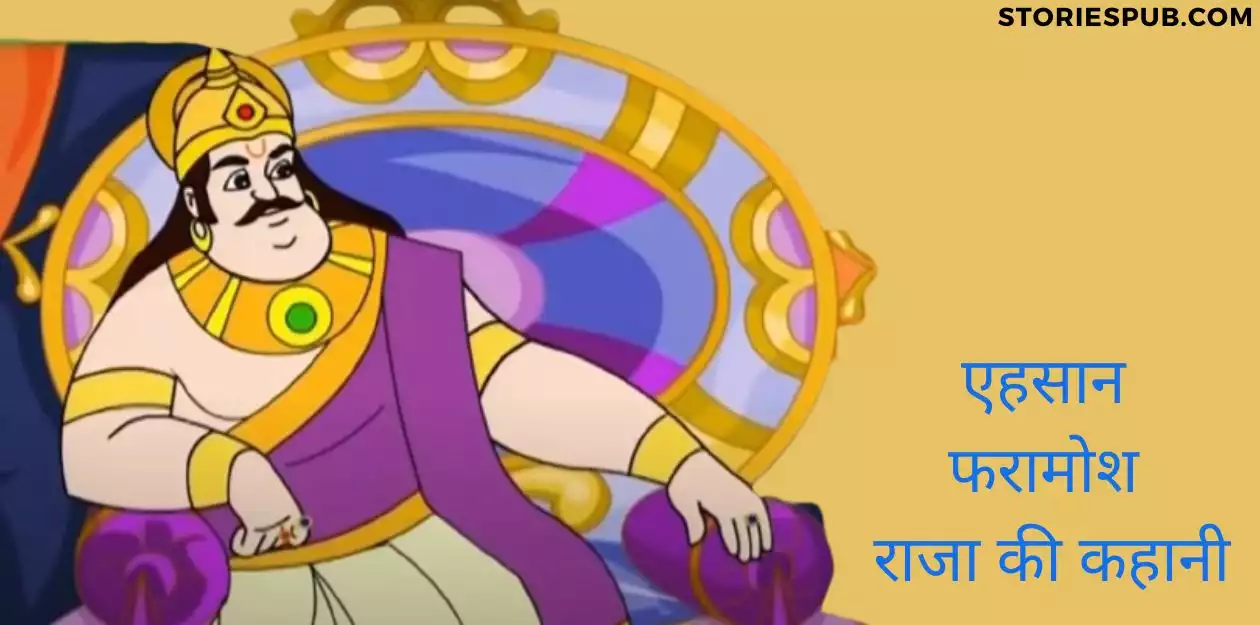Summarize this Article with:
Heket – The Goddess of Childbirth and Fertility

Introduction
Ancient Egyptian mythology is a rich tapestry of gods and goddesses, each with their own unique powers, responsibilities, and symbolism. One of the most important aspects of ancient Egyptian society was childbirth and fertility. In order for the population to continue to grow and thrive, it was crucial that women were able to safely give birth to healthy children.
This is where Heket comes in – the goddess of childbirth and fertility. Heket is one of the lesser-known deities in ancient Egyptian mythology, but her importance cannot be overstated.
She was often depicted as a frog or with the head of a frog, which symbolized fertility and rebirth due to their association with water. As a goddess of childbirth, Heket played a vital role in ensuring safe deliveries for both mother and child.
Brief Overview of Ancient Egyptian Mythology
In ancient Egypt, religion permeated every aspect of daily life. The Egyptians believed in a pantheon of gods and goddesses who controlled every aspect of nature and human activity. These deities were often depicted as humans with animal heads or entirely as animals themselves.
The gods were not just distant figures to be worshipped from afar – they were intimately involved in everyday life. Every temple had its own team of priests who performed daily rituals to honor the gods and ensure their continued favor.
The ancient Egyptians also believed in an afterlife that closely mirrored daily life on earth. It was important for them to prepare for this afterlife through proper burial practices, such as mummification.
Importance Of Childbirth And Fertility In Ancient Egyptian Society
Childbirth and fertility were incredibly important aspects of ancient Egyptian society. The population needed to continue growing in order for society to thrive and for the temples to continue receiving offerings from the people.
Women were responsible for bearing children, and it was always hoped that they would have many healthy offspring. The process of childbirth was considered risky and dangerous, both for the mother and the child.
Midwives were trained to assist with deliveries, but there was still a high mortality rate for both mothers and infants. This is where Heket came in – as a goddess of childbirth, she was called upon to protect both mother and child during delivery.
Fertility was also important in ancient Egypt because it ensured that crops would grow, animals would reproduce, and the population would continue to expand. Heket was associated with fertility due to her frog symbolism, which represented rebirth.
Introduction Of Heket
Heket is one of the lesser-known goddesses in ancient Egyptian mythology. She is often depicted as a frog or with the head of a frog, which symbolizes fertility due to their association with water. As a goddess of childbirth, Heket played an important role in ensuring safe deliveries for both mother and child.
In art, Heket is often shown holding an ankh symbolizing life. She could also be portrayed as standing on two legs or as sitting on a lotus flower while holding her sacred sistrum rattle.
Heket’s importance can be seen by her inclusion in several creation myths. In one story, she helps Atum create humanity by breathing life into clay figures made by him.
Understanding Heket’s role as goddess of fertility and childbirth provides insight into how important these aspects were to ancient Egyptian society. Her association with frogs reveals how important water sources were for agriculture and human survival while her role in assisting safe deliveries emphasized women’s important roles within society.
Origins and Symbolism
Exploration of Heket’s Origins as a Frog Goddess
The goddess Heket was one of the most important goddesses in ancient Egypt. She was closely associated with childbirth, fertility, and renewal. The origins of Heket date back to the early dynastic period when she was worshipped as a frog goddess.
The frog was believed to be a symbol of fertility and rebirth, and it was an animal that had a close connection to the Nile River. Heket’s depiction as a frog goddess can be seen in various forms of Egyptian art.
In some depictions, she is shown as fully formed human with a frog’s head sitting atop her head. In others, she appears as a fully formed woman with webbed feet or simply just depicted as the image of a frog.
The Symbolism Behind the Frog
The symbolism behind the frog is integral to understanding Heket’s role in ancient Egyptian society. The Egyptians believed that frogs were associated with new life because they would emerge from the Nile during springtime after hibernating all winter long.
This connection between frogs emerging from hibernation and new life made them an ideal symbol for childbirth and fertility. Furthermore, frogs were seen as auspicious creatures because they were known for their ability to lay hundreds of eggs in one go, thus signifying abundance and prosperity.
Heket Depicted in Art and Hieroglyphics
Heket is depicted in many different forms throughout various periods of ancient Egyptian history. In early depictions from the Old Kingdom period (2686-2181 BCE), she is often portrayed alongside other deities such as Hathor (goddess of love) or Bes (protector deity). These images show her holding lotus flowers which were also associated with childbirth.
In later periods, Heket appears more frequently in temple art and hieroglyphics. She is often shown with long hair and wearing a headdress that includes the frog head as a symbol of her origin.
In some instances, she is depicted holding an ankh (symbol of life) or a scepter. Overall, Heket’s depiction in ancient Egyptian art reflects her importance as a goddess who played a critical role in ensuring successful childbirths and maintaining fertility in the land.
Role in Ancient Egyptian Society
Description of Heket’s role as a protector during childbirth
In ancient Egyptian society, childbirth was considered a critical event that required the utmost care and attention. Because of this, Heket played a significant role as the protector goddess of childbirth.
She was often depicted standing beside women in labor, holding their hands and offering words of encouragement. Her presence was believed to bring comfort to both mother and child.
Heket’s protection extended beyond just the physical aspects of childbirth; she also safeguarded the spiritual well-being of both mother and child. It is believed that Heket aided in guiding the newborn soul into its new body, ensuring a safe transition into this world.
Importance placed on safe deliveries for both mother and child
Safe deliveries were crucial in ancient Egyptian society since complications during birth could lead to death for both mother and child. Due to this importance, Heket was honored through various rituals and offerings to ensure her continued protection during childbirth.
Expectant mothers would often visit temples dedicated to Heket, where they would offer prayers and offerings such as flowers or figurines representing safe delivery. Pregnant women would also wear amulets adorned with images of Heket as a symbol of her protective powers.
Rituals and offerings made to Heket during pregnancy
Rituals involving Heket were an essential aspect of pregnancy in ancient Egypt. Offerings such as food, clothing, or figurines were given to honor her protective powers over the expectant mother and unborn child. Some temple ceremonies involved invoking Heket’s aid through spell casting by priests or shamans.
These rituals aimed at ensuring safe deliveries while providing spiritual support for expecting mothers. Additionally, many households had small shrines dedicated specifically to worshipping Heket during pregnancy.
These shrines would often contain offerings and figurines of the goddess, where expectant mothers could pray for protection and safe delivery. Overall, Heket’s role in ancient Egyptian society was irreplaceable.
Her presence as the protector goddess of childbirth provided comfort and support for mothers during labor while safeguarding the physical and spiritual well-being of mother and child. The importance placed on safe deliveries further emphasizes the central role that Heket played in ancient Egyptian society.
Associations with Other Deities
Connections between Heket, Osiris, Isis, and Horus
Heket’s association with Osiris can be traced back to the Pyramid Texts of the Old Kingdom. She was often depicted alongside him in scenes that showed her as a protector of his body.
The pair were also considered to be protectors of the pharaoh’s mummified remains and were said to have played an important role in his resurrection. Heket was also closely associated with Isis, who was herself a fertility goddess and the mother of Horus.
Together, Heket and Isis were tasked with protecting women during childbirth. Many depictions show them holding hands or standing together in positions that suggest mutual support.
Like Isis, Heket was also linked to Horus due to her role in protecting him during his infancy. In fact, there are several stories in which Heket plays a crucial role in ensuring Horus’ survival as a baby.
Explanation of the significance behind these associations
The connections between Heket, Osiris, Isis, and Horus are significant for several reasons. First and foremost is their shared connection to fertility and childbirth. In ancient Egyptian society, successful childbirth was essential for maintaining population levels and ensuring the continuation of society as a whole.
Additionally, these associations highlight the importance placed on family relationships within ancient Egyptian culture. As deities responsible for protecting mothers and infants during childbirth, Heket and her counterparts were revered not only for their powers but for their compassion.
These associations show how interconnected different aspects of ancient Egyptian mythology could be. While each deity had its own unique traits and characteristics, they often worked together or overlapped in areas such as fertility or protection.
The Mythology Surrounding Heket
The story of how Heket helped Isis during her pregnancy with Horus
One of the most well-known myths surrounding Heket involves her role in helping Isis give birth to Horus. According to legend, after Osiris was killed by his brother Set, Isis became pregnant with Horus. However, Set was determined to prevent the child from being born and sent a series of serpents and scorpions to attack Isis.
Heket came to Isis’ aid, using her powers over fertility and rebirth to help protect the mother and her unborn child. She was able to ensure that the pregnancy progressed safely, allowing Horus to be born healthy and strong.
The tale of how Heket aided in the birth of Khonsu, god of the moon
Another myth involving Heket centers on her role in aiding in the birth of Khonsu. The story goes that when Khonsu’s mother, Mutemwiya, went into labor, she found herself unable to give birth. Heket was called upon for assistance and used her powers over childbirth and fertility to help Mutemwiya successfully deliver the baby.
The tale also highlights Heket’s connection not only with childbirth but with lunar cycles as well. As a goddess associated with rebirth and renewal, she played an important role in ensuring that new life could emerge even amidst turmoil or difficulty.
Legacy and Modern Interpretations
Discussion on how Heket’s influence can still be seen today through modern interpretations
Despite being an ancient deity associated specifically with Egyptian mythology, Heket’s influence can still be seen today through modern interpretations. For one thing, depictions of frogs or frog-headed figures are still recognized as symbols of fertility or rebirth across many cultures. Additionally, many contemporary artists have used imagery inspired by Heket to explore themes of motherhood or feminism.
Heket’s influence can also be seen through her continued presence in popular culture. Video games such as “Assassin’s Creed Origins” and “Rise of the Tomb Raider” feature Heket as a character or reference to her mythology, while authors such as Rick Riordan have incorporated aspects of Egyptian mythology into their books for young readers.
Examples such as her
Overall, it is clear that Heket was a powerful and important figure in ancient Egyptian mythology. Her associations with fertility, childbirth, and protection ensured that she was revered by both women and men across all levels of society.
But despite being an ancient figure, her influence continues to be felt today through artistic interpretations and popular culture references. As we continue to explore the rich tapestry of ancient mythologies from around the world, it is likely that Heket will remain a central figure for years to come.
Mythology Surrounding Heket
The story of how Heket helped Isis during her pregnancy with Horus
According to ancient Egyptian mythology, the goddess Isis was pregnant with her son Horus, who was destined to become king of Egypt. However, she faced many challenges during her pregnancy and feared for the safety of herself and her unborn child. This is where Heket comes into play.
Heket is said to have come to Isis in the form of a frog, offering comfort and support. She also provided medicinal herbs that helped ease Isis’s pain and ensured a safe delivery for both mother and child.
The story goes on to say that Heket remained by Isis’s side throughout her labor, providing guidance and strength until the moment when Horus was born. This story highlights Heket’s important role as a protector during childbirth and emphasizes the significance placed on safe deliveries in ancient Egyptian society.
The tale of how Heket aided in the birth of Khonsu, god of the moon
Another myth involving Heket tells the story of Khonsu, god of the moon. In this tale, Khonsu’s mother was unable to conceive a child with her husband, causing great sadness for both parents. They soon turned to magic as a solution.
The couple sought out Heket for assistance in their magical ritual. Upon seeing their devotion and sincerity towards having a child, she decided to help them conceive through divine intervention.
As a result, Khonsu was born. This myth showcases Heket’s connection with fertility magic and reinforces her role as a goddess who aids those who desire children.
Legacy and Modern Interpretations
As an important deity in ancient Egyptian mythology associated with childbirth and fertility, it should come as no surprise that Heket still holds a place in modern times. Despite the decline of ancient Egyptian religion, her legacy has continued to be felt through various forms of art and literature.
In modern interpretations, Heket is often portrayed as a symbol of renewal and transformation. Her association with the frog, which undergoes a metamorphosis from tadpole to adult frog, represents the idea of transformation and rebirth.
This makes her particularly appealing to those who are interested in personal growth and spiritual development. Additionally, some modern practitioners of Wicca and other forms of Neopaganism associate Heket with their belief systems.
In these practices, she is often seen as a guardian or protector during childbirth or in rituals relating to fertility. Overall, Heket’s continued presence in modern times serves as a testament to the enduring power and influence of ancient Egyptian mythology.
Legacy and Modern Interpretations
The Enduring Legacy of Heket
Despite being an ancient goddess, Heket’s influence can still be seen today through modern interpretations. One example of this is the continued use of frogs as a symbol of fertility and rebirth.
This connection to Heket has been recognized in popular culture, with frogs being depicted in movies, books and fashion accessories. Another way that Heket’s legacy lives on is through her association with motherhood and childbirth.
In many cultures around the world, there are still rituals and offerings made to deities similar to Heket. Some midwives even invoke her name during births as a protective measure for both mother and child.
Examples of Modern Interpretations
Heket has also been referenced in modern art and literature. For instance, in Margaret Atwood’s “The Year of the Flood,” Heket is mentioned as one of the key figures venerated by a religious group that worships nature.
Similarly, an exhibit called “Divine Felines: Cats of Ancient Egypt” at the Brooklyn Museum included several depictions of Heket in their collection. There are also spiritual movements that draw inspiration from ancient Egyptian mythology which include honoring goddesses such as Heket.
For instance, some Wiccans incorporate Egyptian pantheon into their practices. Furthermore, there are new age practitioners who use crystals associated with fertility during meditations or treatments for women seeking to have children; one such crystal is called ‘Frogite’ – named after Heket’s frog form.
Conclusion The Goddess – Heket played a crucial role in ancient Egyptian mythology due to her association with childbirth and fertility.
As evidenced from her role in mythology up until present day; it is evident that such roles were highly valued back then just as they continue to be now – Motherhood is a sacred experience that continues to be revered, and Heket is considered to be one of the divine beings who help make this happen. Whether it be through modern interpretations, art, or spiritual practices – the legacy of Heket will continue to live on as a symbol of hope and magic for generations to come
Hey kids, how much did you like Heket – The Goddess of Childbirth and Fertility ? Please share your view in the comment box. Also, please share this story with your friends on social media so they can also enjoy it, and for more such Egyptian Mythology, please bookmark storiespub.com.
Related Post :
Heket FAQ
Who is Heket, the goddess of childbirth and fertility?
Heket is an ancient Egyptian goddess associated with childbirth, fertility, and rebirth. She is often depicted as a frog, symbolizing her connection to water, life, and transformation.
What was Heket's primary role in ancient Egyptian mythology?
Heket's primary role was as a protector and helper of women during childbirth. She was believed to assist in the birth process and ensure the health and safety of both the mother and child. She was also associated with fertility and rebirth.
How is Heket related to other Egyptian deities?
Heket is often associated with the goddess Isis, particularly in relation to childbirth and motherhood. She is also connected to the god Osiris, who was believed to have been reborn after his death.
What are the primary symbols associated with Heket?
Heket is often depicted as a frog or a woman with the head of a frog, symbolizing her connection to water, life, and transformation. She is also associated with the ankh, representing the life-giving power of fertility and childbirth.
How was Heket worshiped in ancient Egypt?
Heket was worshiped through prayers, offerings, and rituals intended to invoke her assistance during childbirth and to ensure the health and safety of the mother and child. She was often depicted in amulets and figurines, which were believed to have protective properties.
Are there any temples dedicated to Heket in ancient Egypt?
Yes, there were temples dedicated to Heket in some areas of ancient Egypt, particularly in the Delta region. However, her worship was more commonly associated with household and personal practices.
Were there any specific rituals or festivals associated with Heket?
Yes, there were several festivals associated with Heket, including the "Festival of the Frog," which celebrated her connection to water and life, and the "Festival of Drunkenness," which celebrated her role in the rebirth of Osiris.
What is the symbolism behind Heket's depiction as a frog or a woman with a frog's head?
The frog symbolizes Heket's connection to water, life, and transformation, as well as her role in assisting with childbirth. It was believed that the croaking of frogs announced the coming of the Nile flood, which was associated with fertility and renewal.
How did the worship of Heket change over time?
As Egyptian society evolved and childbirth practices changed, the worship of Heket became less central. However, she continued to be invoked for protection and assistance during childbirth and was often depicted in amulets and figurines.
Can I still find representations of Heket in modern times?
Yes, representations of Heket can still be found in museums, art collections, and books about ancient Egypt. Her image also appears in popular culture, particularly in media related to ancient Egyptian mythology and history.













